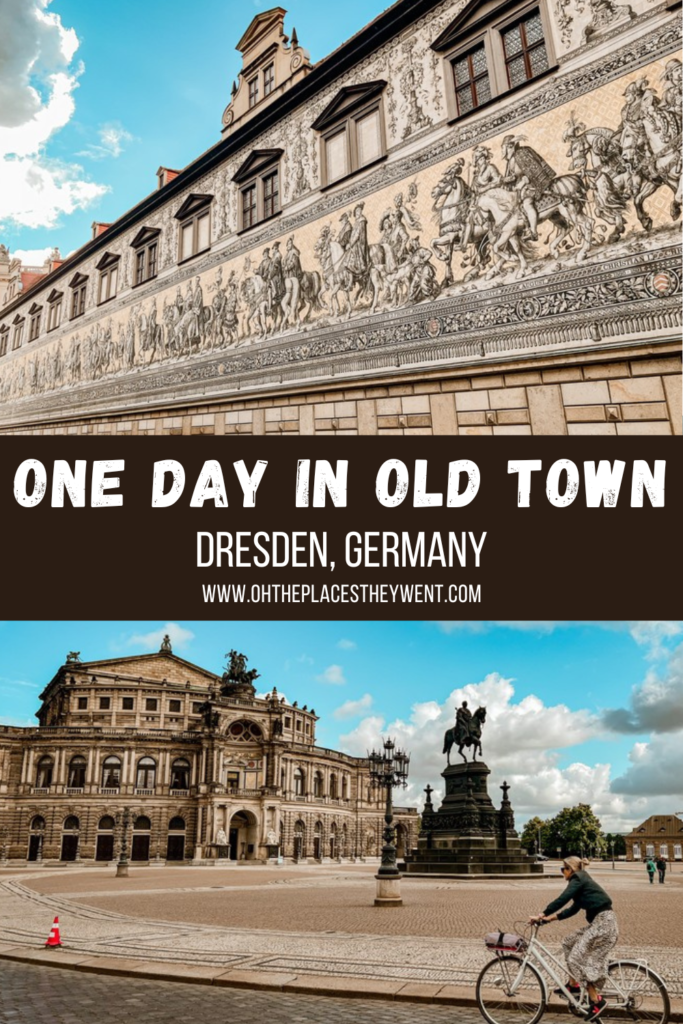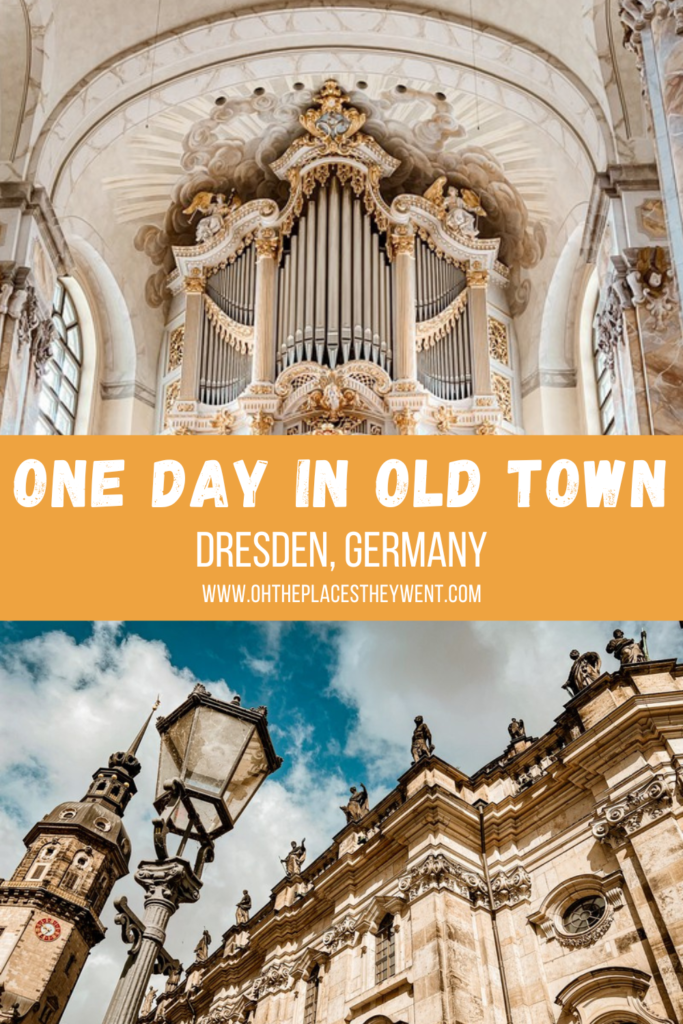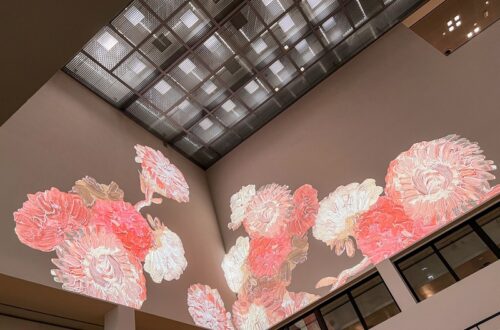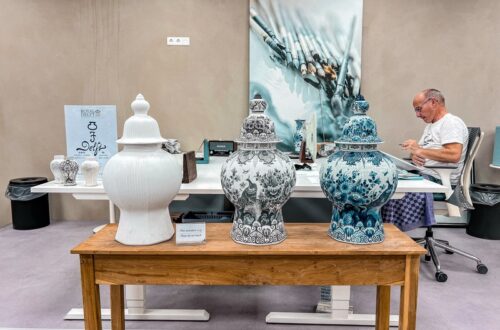One Day In Old Town Dresden, Germany: A Walking Tour
Considered one of the most beautiful Baroque cities in Europe, when we arrived in Dresden, I was very interested to learn and see how the city rebuilt after the firestorm that obliterated much of the area during World War II.
There are now two halves that make up the whole: the Old Town (Altstadt) that was originally built during the Renaissance and Baroque periods and a newer post-war side of the city. Although, pay attention because New Town is actually older than Old Town and Old Town was rebuilt a few decades later.
For this article, we’ll be focusing on the Old Town, which thankfully was rebuilt in all it’s former glory. Old Town Dresden, Germany may not be as old as it once was technically, but it looks and feels like you’re walking through history.
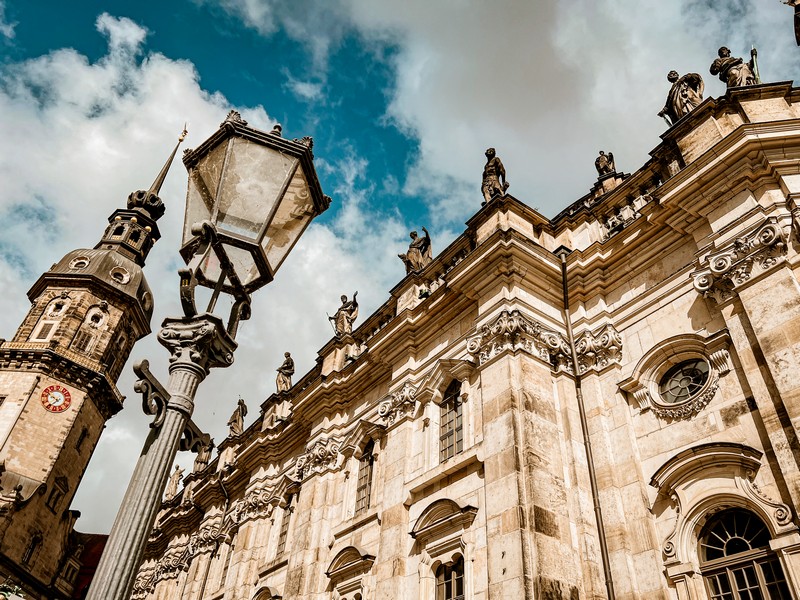
When you visit Dresden, Germany, Old Town is where you should start:
(This post contains affiliate links, which means I receive a certain percentage of a sale if you purchase after clicking at no cost to you. Thank you for your support.)
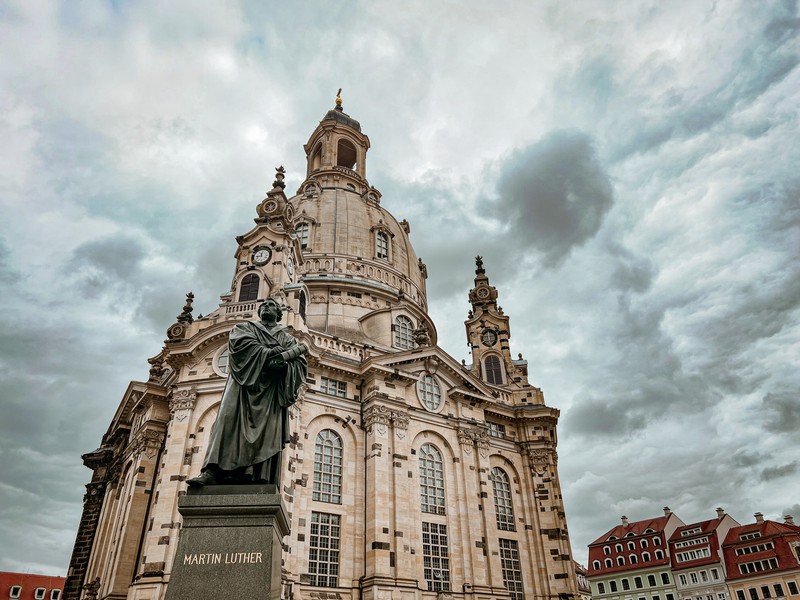
The History of Dresden At a Glance
The first time Dresden was mentioned was in a medieval document from around 1206 and it became the capital of the Margraviate of Meissen, a territory of the Holy Roman Empire in 1270. To say the area has history is an understatement.
Dresden was the residence of Saxon princes, electors, and kings starting in the 15th century. The reign of Augustus the Strong, beginning in 1697, saw extensive construction work that turned the city into a jewel on the Elbe River. The city became home to an extensive museum collection that was the richest and largest in Europe.
Fun Fact: Dresden is known as “Florence on the Elbe” as it’s home to a wealth of art and culture and some of the most beautiful Baroque buildings in Germany.
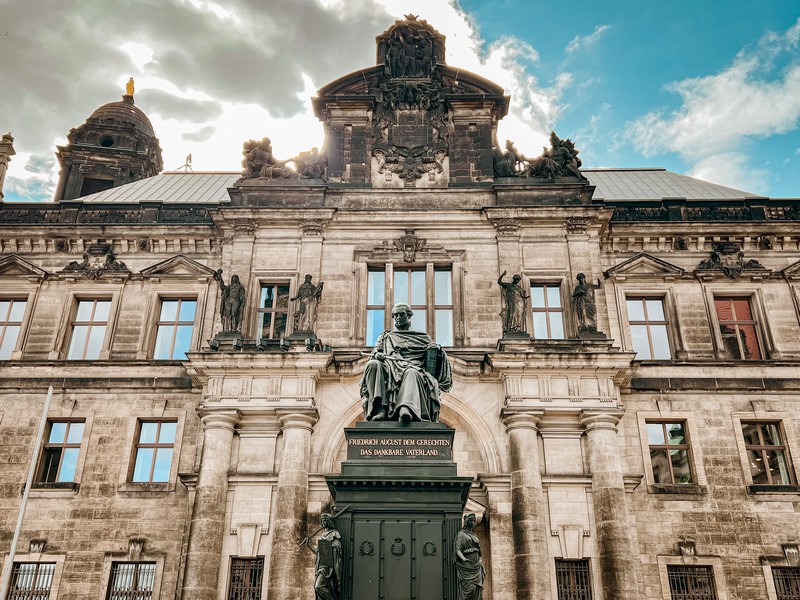
The city center and parts of the suburbs were absolutely and completely destroyed during World War II, so completely that it took until 1977 to clear all of the war debris and remnants away.
In the 1950s, renovation and reconstruction began on the city’s historic buildings. It took Dresden more than 50 years to rebuild and there is still reconstruction work going on today.
Dresden Walking Tours
Having a guide who can share the stories of the rebuild of Dresden and why the buildings in Old Town Dresden are especially important is a great opportunity.
We had a fantastic guide for a three hour tour in the morning and then in the afternoon were on our own to go inside of the Zwinger and enjoy the art.
- 2 Hour Old Town Highlights Tour: Join a local guide through Get Your Guide to visit Theaterplatz, Zwinger, Dresden Castle, Church of Our Lady and see the Procession of Princes mural.
- 3~ hour Old Town Tour: If you want a bit more, there’s a tour with Get Your Guide that visits Dresden Castle, Zwinger, Church of Our Lady, the cathedral, and enters the Semper Opera House.
Things To See In Old Town Dresden
Though it’s called Old Town, it’s important to realize that this area was almost completely destroyed during World War II. This means that New Town on the other side of the river is actually older than Old Town. That said, Old Town was rebuilt to preserve the former glory when the city was a haven for art and high culture so you’ll be surrounded by the Baroque architecture and decor in Old Town.
Old Town Dresden is very walkable, in fact, much of it is pedestrian-only. I’ve put the things to see in Old Town Dresden below in a good walking order so keep that in mind.

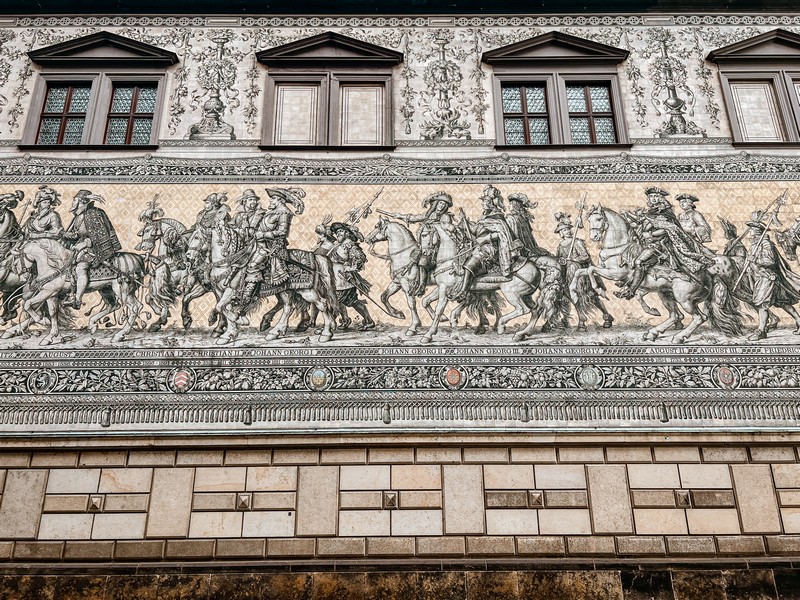
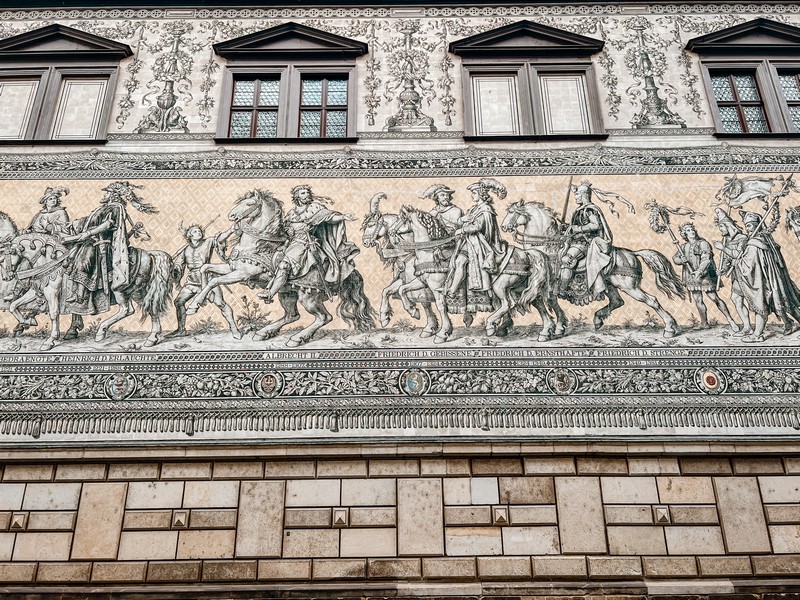
Procession of Princes
To get your day in the Old Town of Dresden started, take a walk along the Procession of Princes. This 101-meter long mural represents the history of the Wettins, Saxony’s ruling family. It is huge and long and if you visit in the morning, you can see the street quietly on your own, taking your time to see all of the rulers of the past. Pay close attention as to how their garb changes from the beginning to the end.
Visiting Tip: We visited at 9:30am and had the street to ourselves except for a couple local pedestrians. Later in the day, it was much busier when we passed again. Visit in the morning for undisturbed viewing.
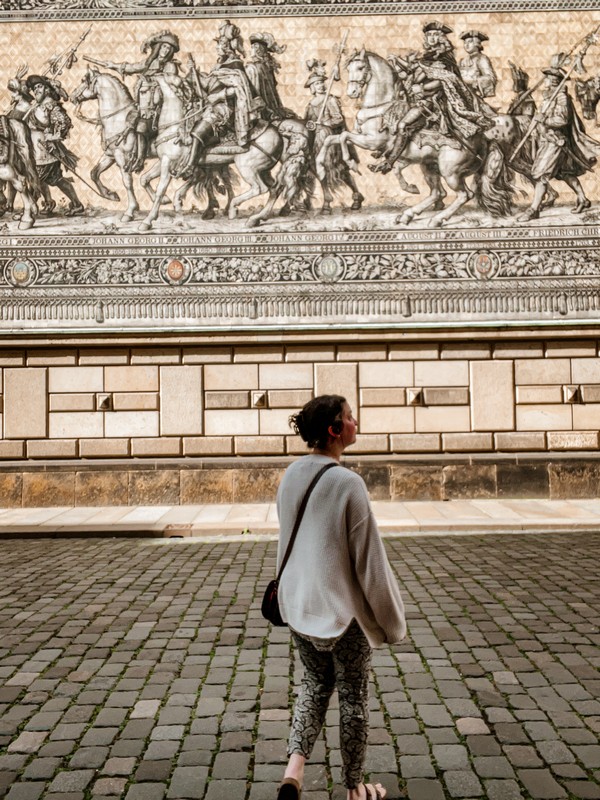
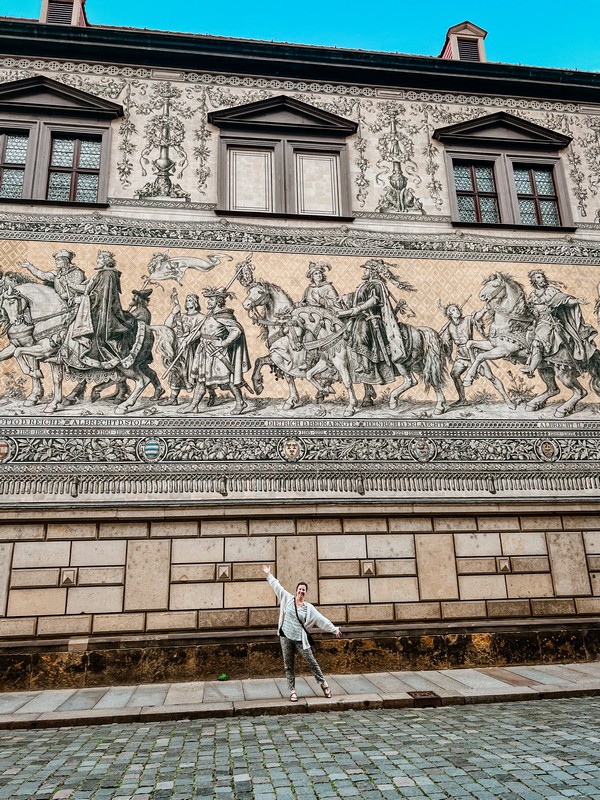
Completed for the 800th anniversary of the princely House of Wettin between 1872 and 1876, the mural originally established here began to fade rather quickly so it was converted to Meissen porcelain tiles between 1904 and 1907 to preserve it. You’ve probably heard of the Porto tile facades, but have you heard of this one in Dresden yet? It’s stunning.
Fun Fact: There are more than 24,000 tiles in the Procession of Princes artwork and today it is the world’s largest porcelain artwork.
- Address: Augustusstraße 1, 01067 Dresden, Germany

Georgentor
Dresden’s first Renaissance building, the George Gate was commissioned by George the Bearded between 1530 and 1535. This replaced an exit from Dresden to the Elbe Bridge.
George the Bearded’s motto is inscribed in the facade and reads “Per Invidiam Diaboli Mors Intravit In Orbem”, which means “through envy of the devil came death into the world”.
Fun Fact: Saxony’s last king, Friedrich August III, lived in George Gate until 1918.

Stallhof
Once home to knightly games and tournaments, the Stall Courtyard is apart of the Royal Palace complex and was built in 1586 for Christian I. It is one of the oldest tournament arenas in the world that has retained its original design.
After walking along the Procession of Princes, note that the Stallhof is just on the inside of that masterpiece and you can walk through this arcade too.
- Address: Augustusstraße 1, 01067 Dresden, Germany
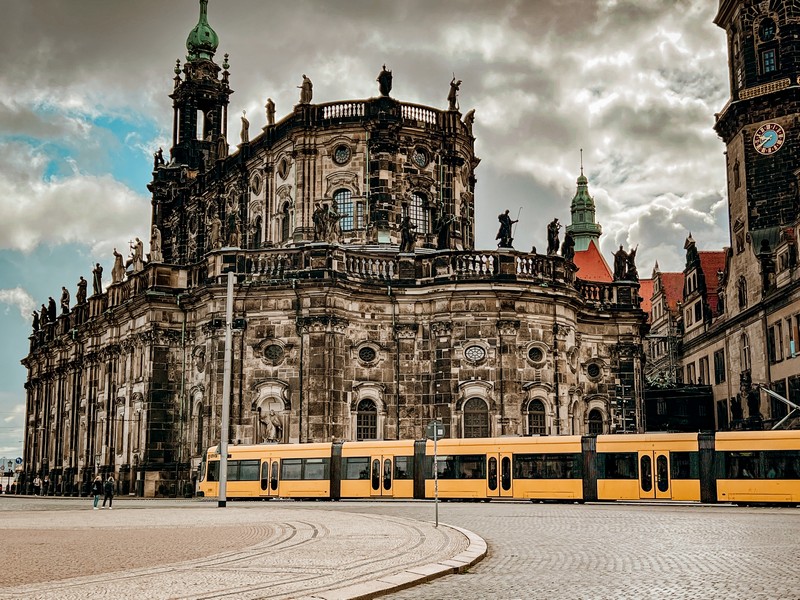
Sanctissimae Trinitatis Cathedral
This Catholic Court Church is Saxony’s largest ecclesiastical building and was built by Italian architect Gaetano Chiaveri between 1738 and 1754 in Baroque style. Technically Dresden’s youngest Baroque building, the floor plan is almost 4,800 square meters!
Here is where you can find the Wettin princes and kings and the heart of Augustus the Strong. Since 1980, the Cathedral has been the Cathedral of the Dresden-Meissen Diocese.
- Address: Theaterplatz/Schloßplatz, 01067 Dresden, Germany
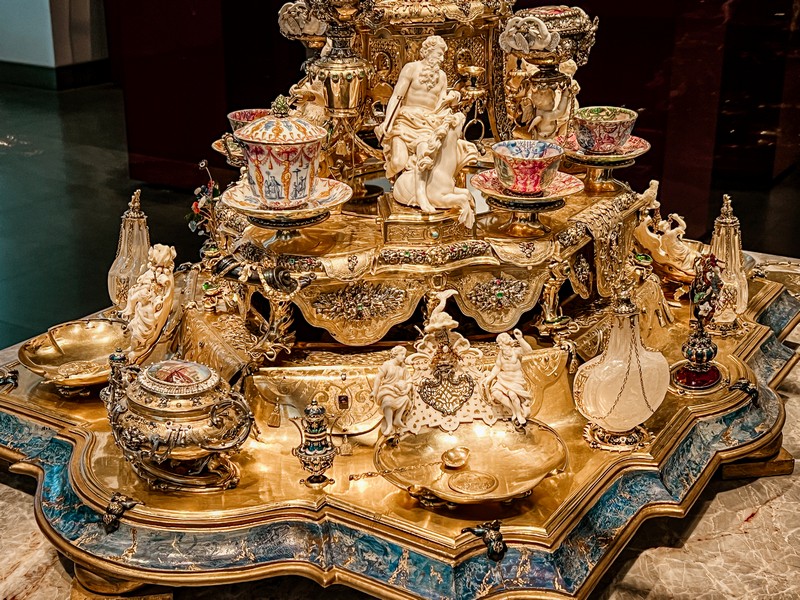
The Royal Palace and the Green Vault
Dresden’s Royal Palace, also called Dresden Castle, was once the hub of power for the Saxon princes and kings. First mentioned in the 14th century as a castle complex, the four-wing palace was built in the 15th century. After it was destroyed by fire in 1701, the palace was reconstructed in ornate Baroque style under Augustus the Strong.
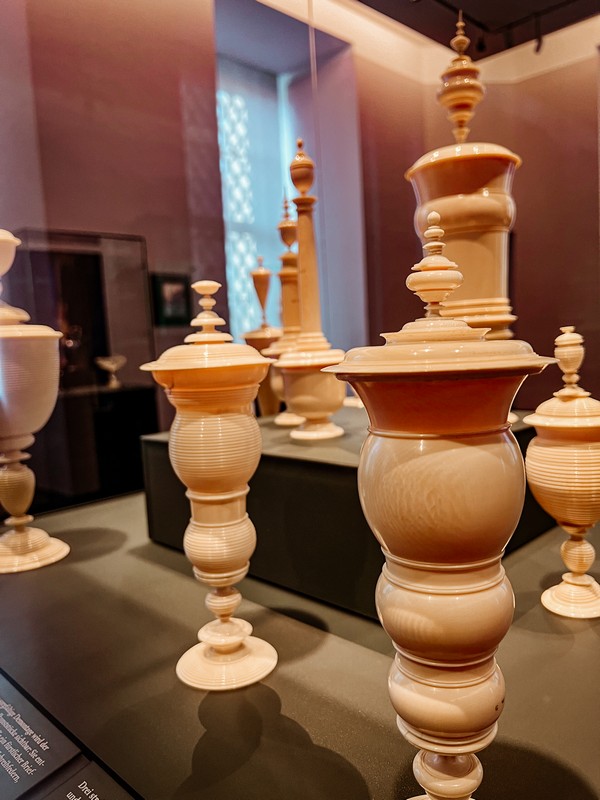

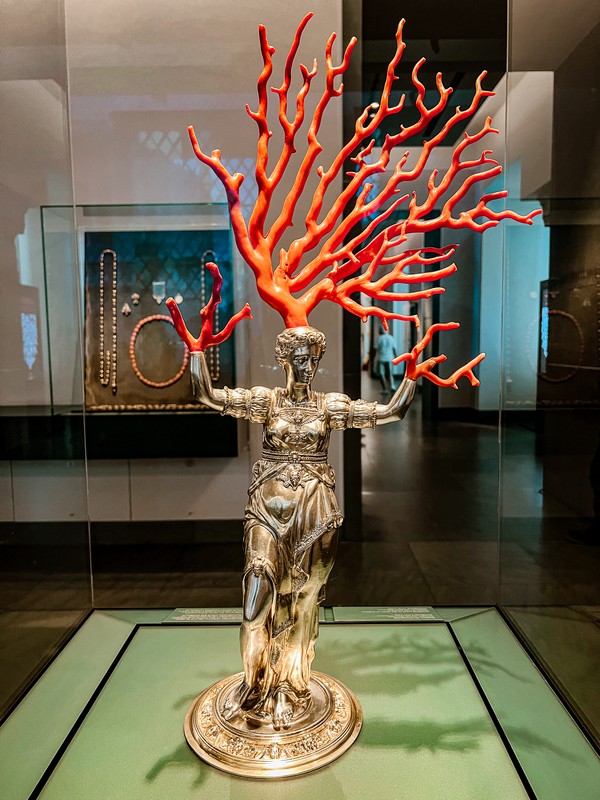
After air attacks during the last few months of the Second World War, the palace burned down to its foundations once again. Most of the valuable interior furnishings were lost, but it was rebuilt in the 1960s and restoration work is still continuing today.

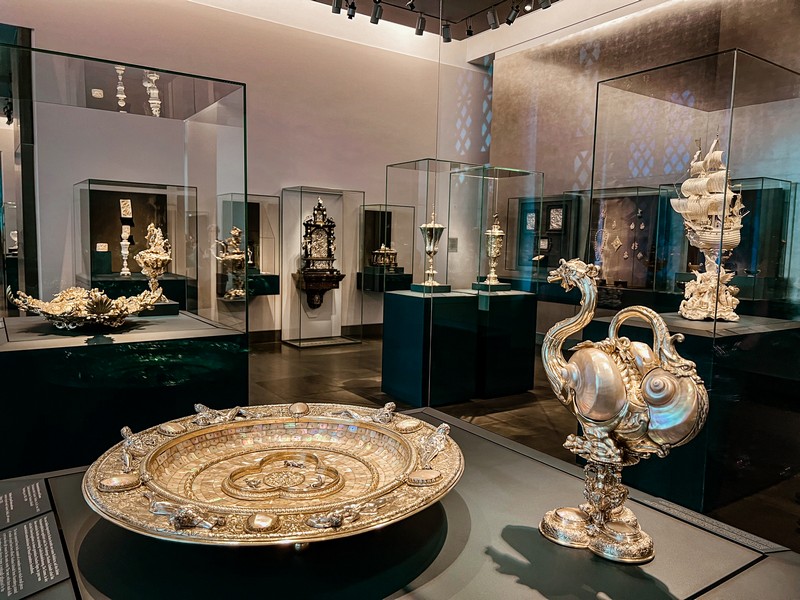
Today, when people visit, they can find museums housed in Augustus the Strong’s collection rooms including the Historic Green Vault, the New Green Vault, the Numismatic Cabinet, the Collection of Prints, Drawings, and Photographs, and the Dresden Armory.
Visiting Tip: The New Green Vault and the Historic Green Vault are the most popular sections to visit in the museum. The Historic Green Vault allows visitors into the restored rooms of the treasury, while the New Green Vault showcases the extremely impressive collection of gorgeous craftwork and wares the royals had collected from around the world.
- Address: Taschenberg 2, 01067 Dresden, Germany
- Hours: Wednesday – Monday: 10:00am ~ 6:00pm
- Admission: Adults: €14.00; Under 17: Free

Semper Opera House
Home to the Saxon State Orchestra, one of the world’s oldest and best-known orchestras, the Semper Opera House is the most famous opera house in Germany. Built by Gottfried Semper between 1838 and 1841, it has seen nine of Richard Strauss’ 15 operas premiered here, including “The Knight of the Rose”, and some of Richard Wagner’s most famous operas like “Tannhäuser” and “The Flying Dutchman”.
Closed in 1944 and subsequently destroyed the next year during the bombings, when it came time to rebuild Dresden, the Semper Opera House was not high on the list of places to rebuild according to the German Democratic Republic (GDR). In fact, the residents of Dresden really had to stand up to save the site that wouldn’t see an opera house again until 1985.
Fun Fact: Make sure to notice the statue of King Johann that you can see in the square just in front of the Opera House. Apparently, the GDR, seeing no reason to promote the royal houses of Germany thought it should be replaced by a large statue of a tractor to represent the hard-working people. Thankfully, the Opera House and statue were built as they had been formerly.
- Address: Theaterplatz 2, 01067 Dresden
- Guided Tour: If you’d like to inside Semper Opera House, be sure to book a guided tour. You can book on Get Your Guide.
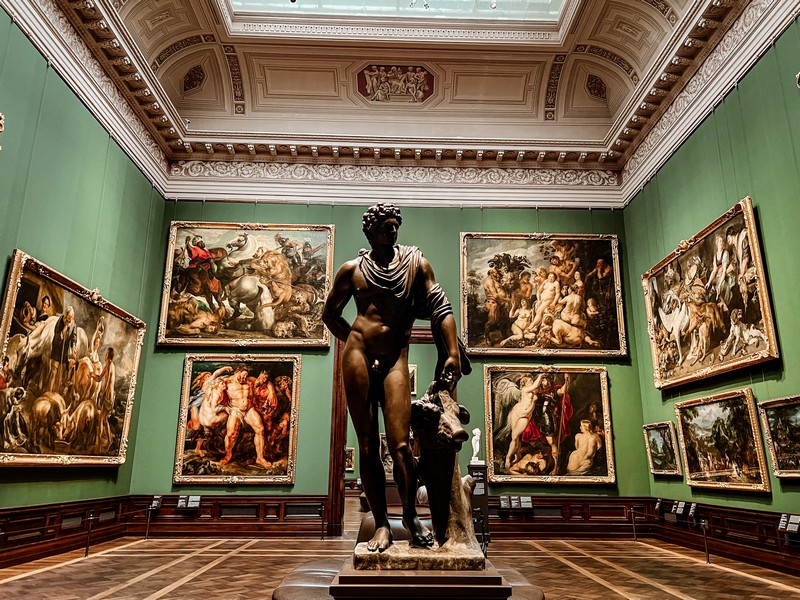
Zwinger Palace & Old Masters Picture Gallery
Zwinger Palace was built between 1710 and 1728 and designed by architect Pöppelmann and is said to be a perfect example of Late Baroque architecture in Germany.
It was originally planned for festivities and parties and is now home to three museums: the Old Masters Gallery, the Porcelain Collection, and the Mathematical and Physical Instruments collection.
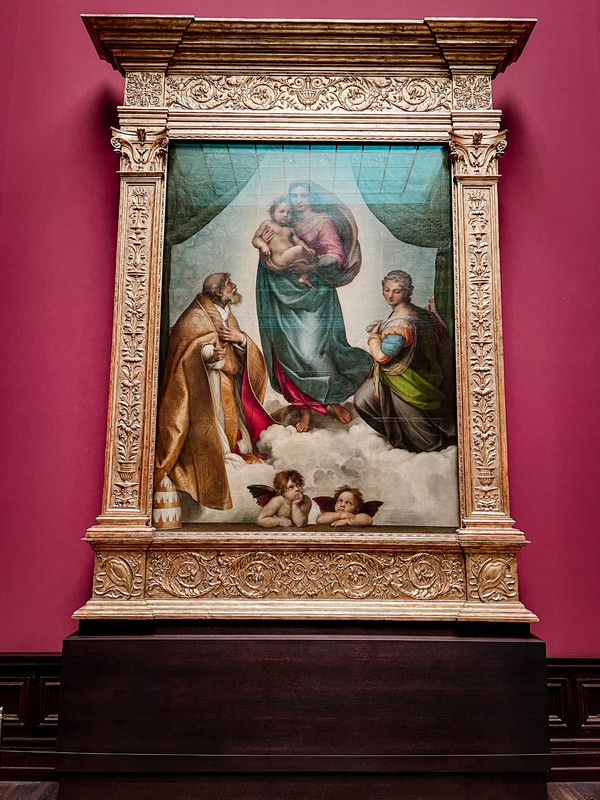
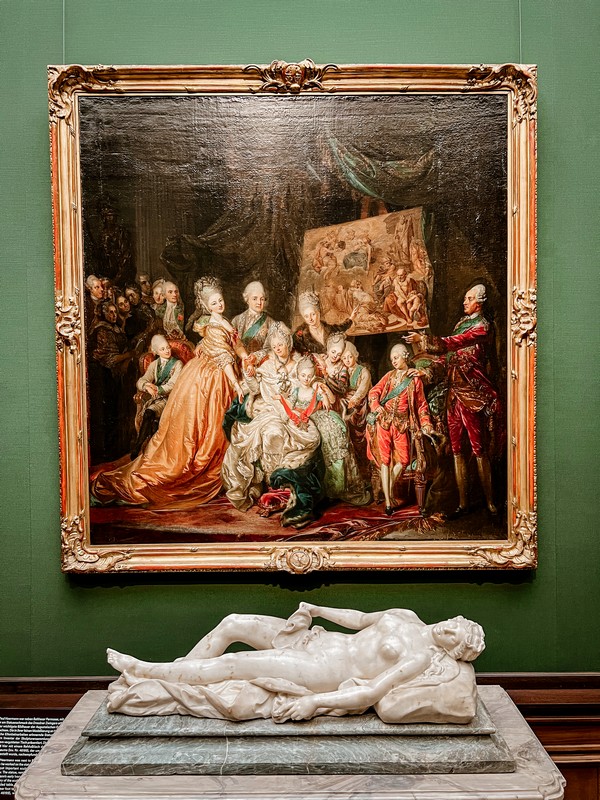
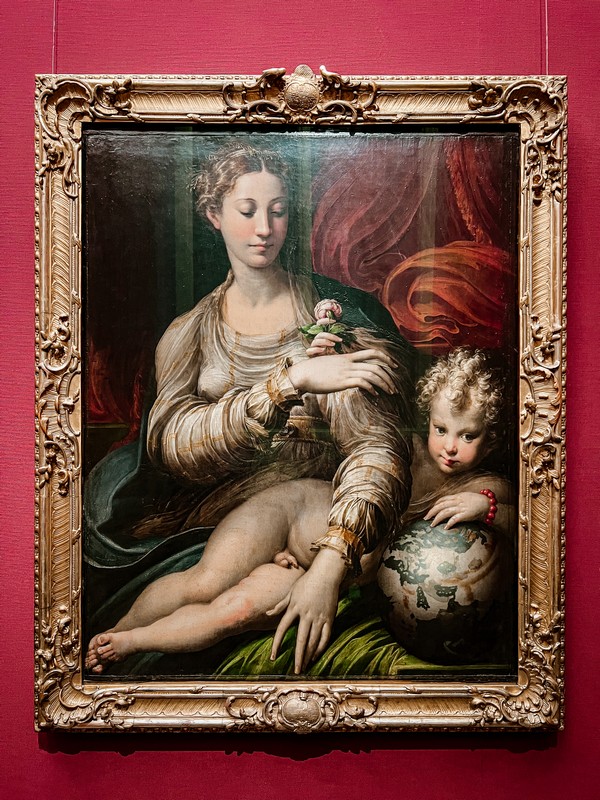
If you’re going to visit one collection in Zwinger Palace, make it the Old Masters Pictures Gallery. They have an extensive collection which was saved during WWII when they were hidden in the nearby mountains. Later confiscated by the Red Army, the works were returned to Dresden in 1955.
There are paintings like Vermeer’s Girl Reading a Letter at an Open Window, Rafael’s The Sistine Madonna, Rebrandt’s Ganymede, and Titian’s Zinsgroschen.

Visiting Tip: If you want to see the must-see works in the Old Masters Pictures Gallery, go all the way up to the top floor first and work your way down. The most popular works are upstairs so if you’re short on time or have children who may not be as intrigued for hours, start there to see what you NEED TO SEE.
- Address: Theaterplatz 1, 01067 Dresden
- Hours: Inner Courtyard and Outdoor Gallery: Every day: 6:00am ~ 10:00pm; Museums: Tuesday – Sunday: 10:00am ~ 6:00pm
- Art Museum Admission: Adults: €14.00; Under 17: Free
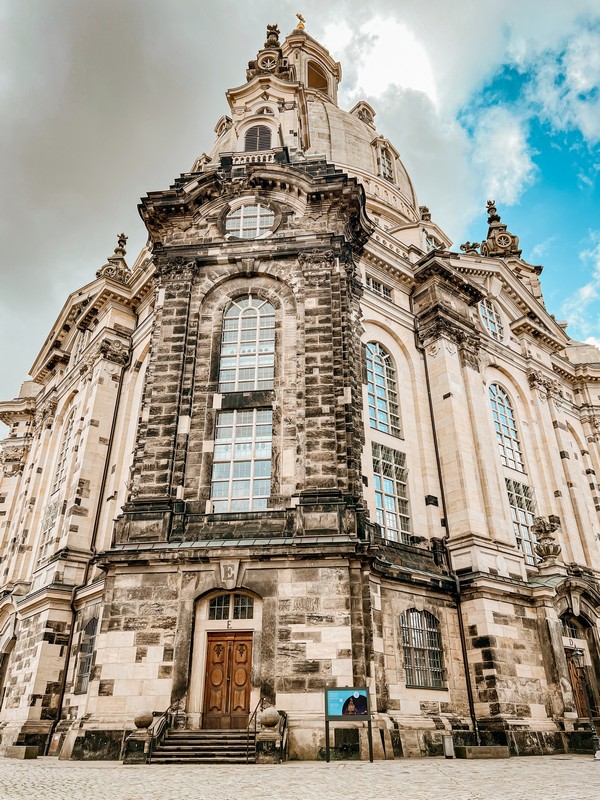

Frauenkirche
Before stepping into the beautiful Church of Our Lady, take a seat in the surrounding square area and just take it in first. The first Church of our Lady was a Catholic church built in the 11th century. It later became a Protestant church during the reformation and was torn down and then replaced by a new Lutheran church.
The building there today was designed by George Bähr and originally built between 1726 and 1743. The church’s iconic dome is 96 meters, or 315 feet, tall and is known as Stone Bell. There was a lot of discussion surrounding the dome and potential for collapse, however, it didn’t actually collapse until 1945 during the rain of bombs.

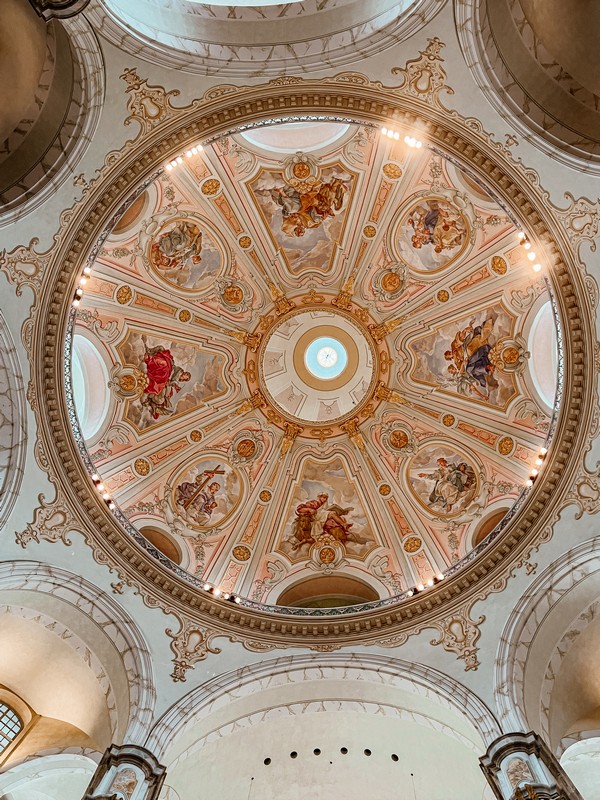
Fun Fact: Rebuilding the church cost 180 million Euros! Nobel Prize recipient Gunter Blobel donated his prize money to the restoration and England’s Prince Edward supported the Dresden Trust which contributed funds for the project among many many other donations from locally and abroad.
After the war, the church was left as rubble for 50 years and when it was rebuilt, new stones along with some 3,800 original stones were utilized. So as you sit and look, you’ll notice stark black stones interspersed among the white stones. Our guide mentioned that eventually, they will all be black again.
- Address: An der Frauenkirche, 01067 Dresden
Old Town Dresden, Germany is a must see for any architecture and art lover, but also for a history buff that wants to see how a city managed to come back and rebuild in such a beautiful and accurate way.
Did you like this post? Pin iT!
